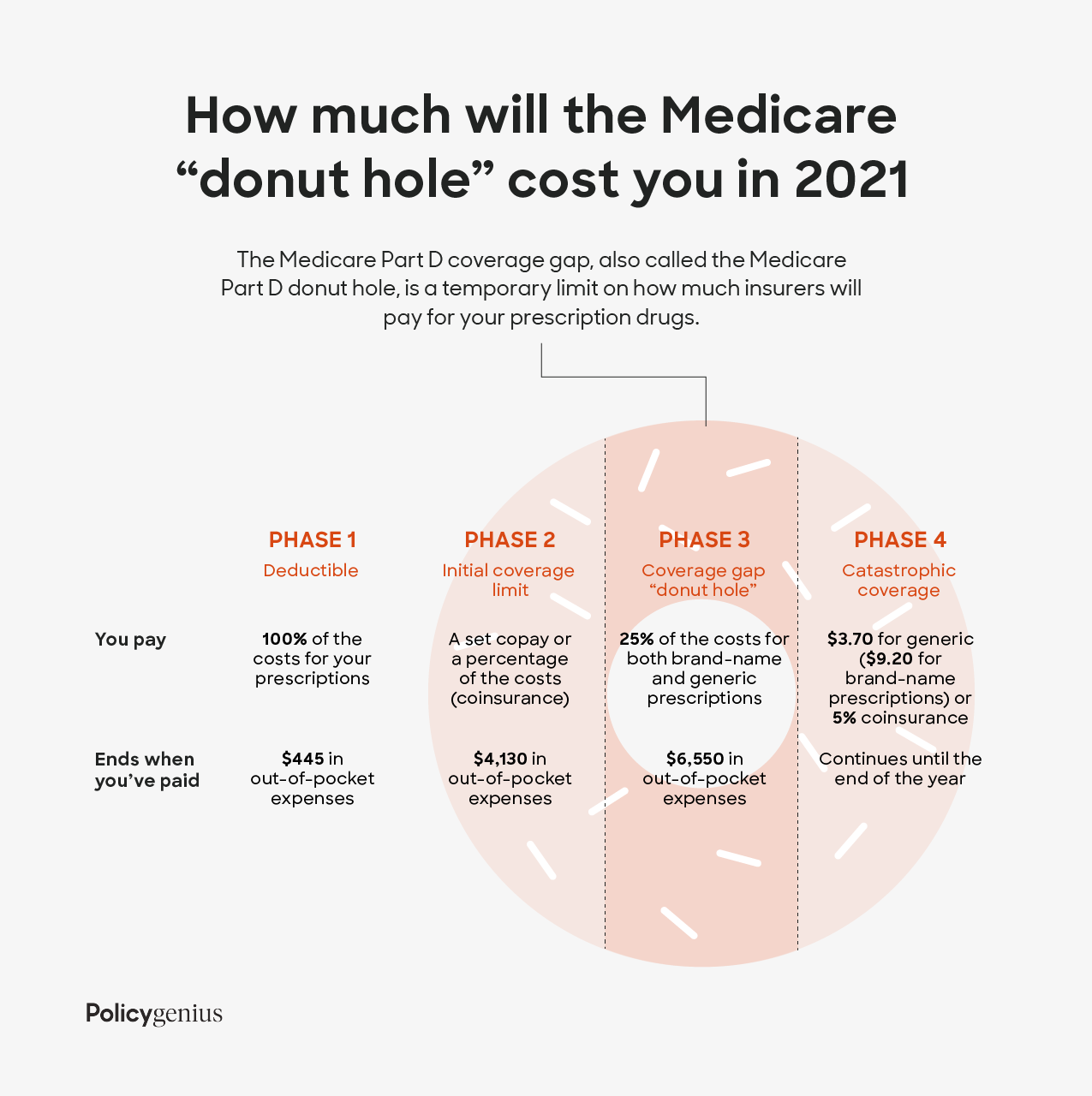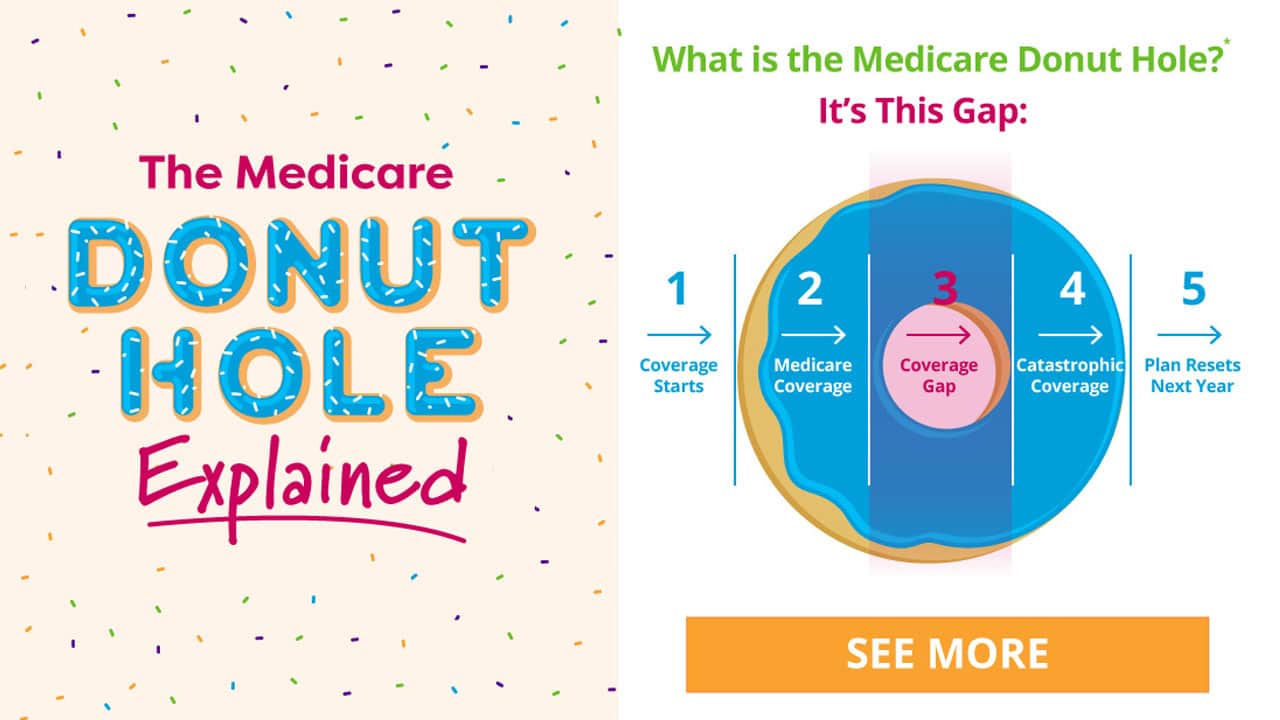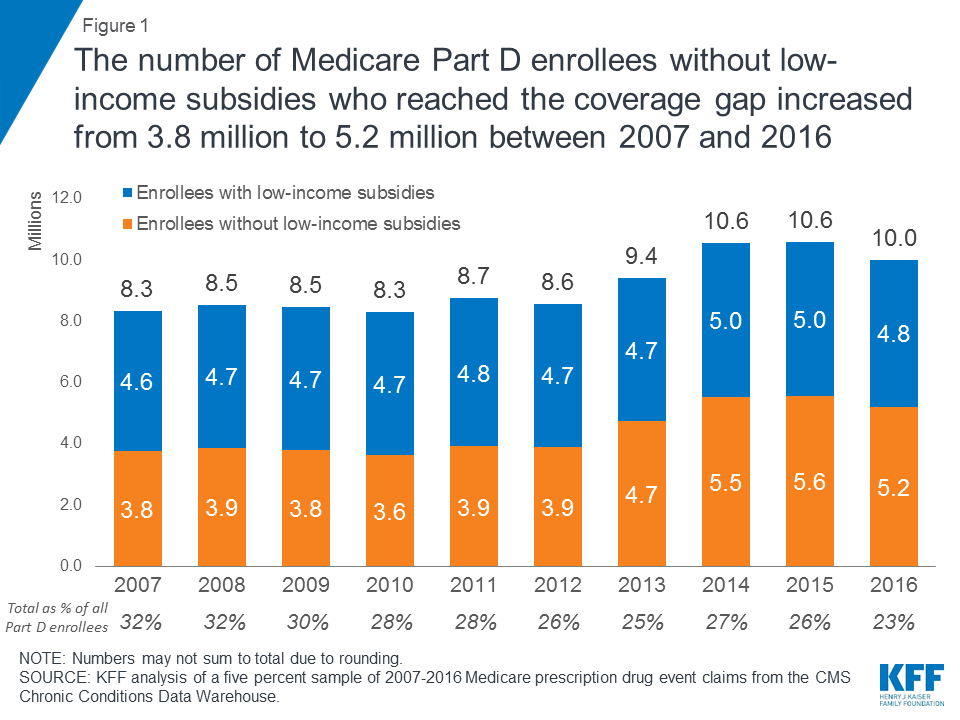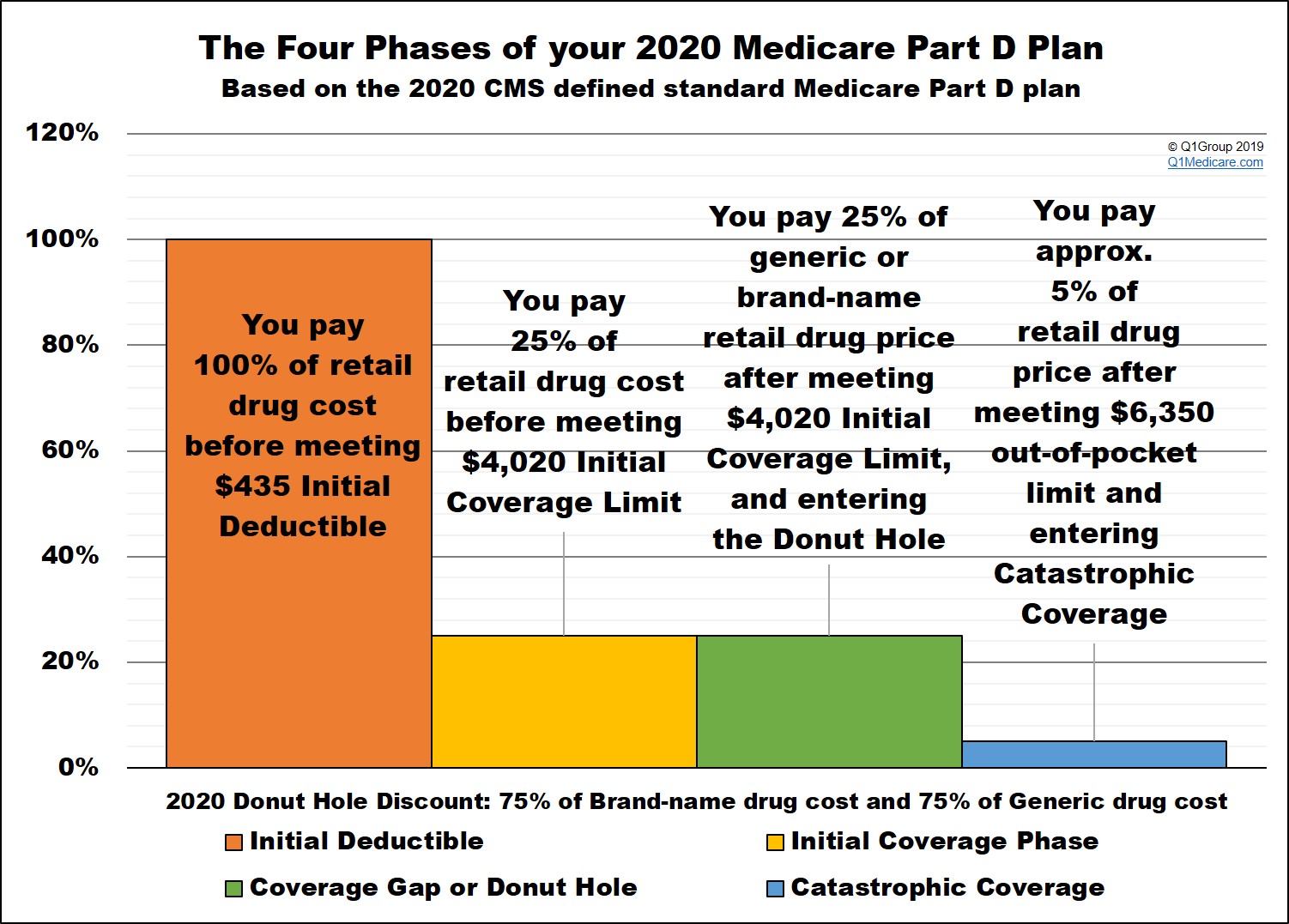Part D donut hole costs for 2019 In 2019 you will pay only 25 percent on brand name drugs in the coverage gap while Medicare Part D will cover 75 percent of the cost. This amount may change each year.
 Donut Hole Explanation English 06feb19 Freseniusrx
Donut Hole Explanation English 06feb19 Freseniusrx
The coverage gap begins after you and your drug plan have spent a certain amount for covered drugs.

Part d coverage gap explained. What is the Medicare Part D donut hole. This gap will officially close in 2020 but you can still reach this out-of-pocket threshold where your. Some Medicare Part D plans provide coverage when people enter the coverage gap.
A coverage gap means you may end up paying out-of-pocket for your medication. Once you have spent up to the yearly limit your coverage gap ends and your drug plan helps. During this stage of coverage you may start paying more for covered prescription drugs than what you paid earlier in the year.
The donut hole also known as the coverage gap is one of the most complicated parts of the Medicare Part D prescription drug benefit. The coverage gap is a temporary limit on what most Medicare Part D Prescription Drug Plans or Medicare Advantage Prescription Drug plans pay for prescription drug costs. Once you and your plan have spent 4130 on covered drugs in 2021 youre in the coverage gap.
The coverage gap begins after you and your drug plan have spent a. Not everyone will enter the coverage gap. This coverage gap opened after initial plan coverage limits had been reached and before catastrophic coverage kicked in.
Most plans with Medicare prescription drug coverage Part D have a coverage gap referred to as a donut hole This means that after you and your drug plan have spent a certain amount of money for covered drugs you have to pay all costs out-of-pocket for your prescriptions up to a yearly limit. When does the donut hole kick in. The donut hole coverage gap is one of four phases in your Medicate Part D coverage that may result in additional out-of-pocket expenses.
This means theres a temporary limit on what the drug plan will cover for drugs. When Part D plans first became available in 2006 beneficiaries paid 100 of their drug costs while they were in this spending window known as the coverage gap or more commonly as the donut hole. We will discuss these stages are impact by your TROOP True Out-Of-Pocket Expense.
What is the donut hole amount for 2021. Also people with Medicare who get Extra Help paying Part D costs wont enter the coverage gap. In addition the drug manufacturer discount on these drugs increases from 50 percent to 70 percent in 2019.
The Medicare Part D donut hole is a temporary coverage gap in how much a Medicare prescription drug plan will pay for your prescription drug costs. The Medicare Part D donut hole also known as the coverage gap is a stage in Part D prescription drug coverage that may temporarily limit what your Medicare prescription drug plan will cover. The initial purpose of Medicare Part D in the bill was to allow people in need to acquire voluntary and additional coverage.
The donut hole amount for 2021 is 4130. Most Medicare Prescription Drug Plans have a coverage gap also called the donut hole. The coverage gaps effect on people insured under Part D plans has been substantially diminished since the Patient Protection and Affordable Care Act of 2010 ACA or Obamacare was put into place.
In this video we are going to talk about the four stages of the Medicare Part D prescription drug coverage. In other words they would pay a deductible and then the Part D plan would pay a significant amount of their drug costsbut only until their spending got high enough to enter the. From 2006 through 2010 you were responsible for 100 of your drug costs unless your.
Once you and your prescription drug plan have spent this amount on covered drugs you enter the coverage gap called. The benefits are usually limited to certain prescriptions. When Medicare Part D prescription drug plans first became available there was a built-in gap in coverage.
3 The Coverage Gap or Donut Hole. As mentioned this is the portion of your Medicare Part D coverage where you pay a larger percentage of the retail drug cost. These plans also typically have higher monthly premiums.
While in this gap plan members had to pay the full cost of their covered drugs until their total costs qualified them for catastrophic coverage. The Medicare Coverage Gap Donut Hole Explained Medicare is clear that you may have a coverage gap in Part D of your plan. The phrase donut hole was commonly used to describe this gap.
This includes the deductible your initial coverage the coverage gap formerly referred to as the donut hole and catastrophic coverage. Obamacare lessened the burden on people who get stuck in the. People can avoid the coverage gap if they qualify for Extra Help or an assistance program in their state of residency.
It refers to the period during which people with a Medicare Part D drug plan have to pay for a certain percentage of their drug costs.
 Your Guide To Medicare Part D For 2021 Policygenius
Your Guide To Medicare Part D For 2021 Policygenius
 What Is The Donut Hole Or Coverage Gap
What Is The Donut Hole Or Coverage Gap
 Medicare Donut Hole Medicare Part D Coverage Gap
Medicare Donut Hole Medicare Part D Coverage Gap
 Medicare Part D Donut Hole Explained When Does The Donut Hole End
Medicare Part D Donut Hole Explained When Does The Donut Hole End
 An Explanation Of The 2017 Medicare Part D Coverage Gap Or Donut Hole
An Explanation Of The 2017 Medicare Part D Coverage Gap Or Donut Hole
 What Is The Medicare Part D Coverage Gap Youtube
What Is The Medicare Part D Coverage Gap Youtube
 Why Is The Part D Coverage Gap Called The Donut Hole
Why Is The Part D Coverage Gap Called The Donut Hole
 Covering The Medicare Part D Donut Hole
Covering The Medicare Part D Donut Hole
 Medicare Donut Hole Made Simple
Medicare Donut Hole Made Simple
 Medicare Part D Donut Hole Prescription Drug Coverage Gap
Medicare Part D Donut Hole Prescription Drug Coverage Gap
:max_bytes(150000):strip_icc()/medicare-part-d-costs-4589863_FINAL1-baa8a3ab3a5c4a77ba72e1d730f754c7.png) Understanding The Medicare Part D Donut Hole
Understanding The Medicare Part D Donut Hole
 Closing The Medicare Part D Coverage Gap Trends Recent Changes And What S Ahead Kff
Closing The Medicare Part D Coverage Gap Trends Recent Changes And What S Ahead Kff
 2021 Medicare Part D Deductible Costs Copays Donut Hole Discount Explained
2021 Medicare Part D Deductible Costs Copays Donut Hole Discount Explained
 Understanding The 2020 Medicare Part D Donut Hole
Understanding The 2020 Medicare Part D Donut Hole
No comments:
Post a Comment
Note: Only a member of this blog may post a comment.